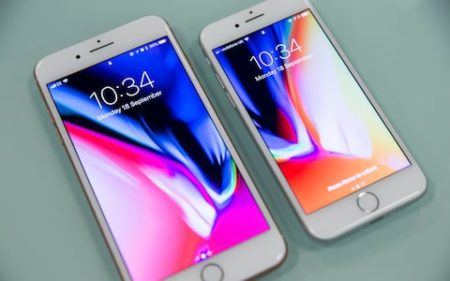
Apple’s next iPhone launch will arrive to great fanfare today, when users will get to see the latest smartphones from the Californian technology giant for the first time.
The firm is set to unveil three new iPhones at the launch event in San Francisco. The iPhones are expected to be a follow up to last year’s iPhone 8 and iPhone X models with a trio of new iPhones: two premium upgrades called the iPhone XS and iPhone XS Max, and a cheaper device that will be a follow up to the iPhone 8 and is likely to be called the iPhone Xc.
But what will the differences be, and will Apple’s new smartphones be a worthy upgrade on the iPhone 8?
iPhone 8 v iPhone XS
The new iPhone for 2018 is expected to be called the XS, in keeping with Apple’s naming phones using an “S” for iterative devices.
There are set to be some key differences between the old device and what could be a trio of new models as Apple adopts its high-end iPhone X design on all its main smartphones.
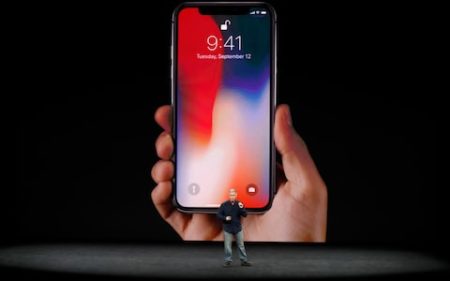
Last year, the iPhone X was essentially a tenth anniversary iPhone (X was, of course, pronounced “ten”) after the original iPhone was launched in 2007.
Now, Bloomberg reports all three of its new smartphones will follow the design of the iPhone X, including a notch, a small inset at the top of the screen which houses the front camera and microphones for additional screen space.
iPhone 8 vs iPhone XS design
The iPhone 8 had a similar design to Apple’s older iPhone 7 and iPhone 7 Plus. It had a normal amount of screen space with a 4.7-inch display, while the larger model the iPhone 8 Plus has a 5.5-inch screen.
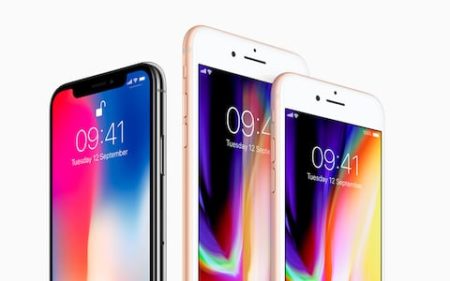
The new iPhone XS model is expect instead to push forward with Apple’s build for the iPhone X. The company will launch three models, with an updated version of the iPhone X with a 5.8-inch screen in a small body size thanks to its thin bezels.
It will also release its largest iPhone ever – expected to be called the iPhone XS Max – a 6.5-inch premium model, and a cheaper 6.1-inch screen, again using the notch design.
iPhone 8 v iPhone XS: screen type
While the old iPhone 8 had regular LCD screens, the new iPhones are expected to feature more expensive OLED (organic LED) screens. These allow the phone to show deeper black colours and contrasts.
The two most expensive phones, the 5.8-inch model and the 6.5-inch model, will have OLED screens and be premium devices.
The 6.1-inch phone will still keep an LCD screen and probably have a lower asking price.
iPhone 8 v iPhone XS: colours
It is not yet clear what colours we can expect the new iPhone to be available in. At the moment, the iPhone 8 comes in silver, gold, black, and red. Apple analyst Ming-Chi Kuo has reported that he expects the new iPhone to come in multiple colours in an effort to boost sales including gold, grey, white, blue, red and orange.
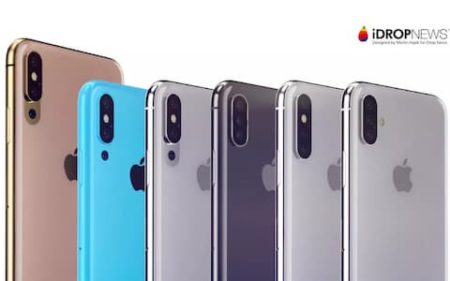
Apps and software changes
The new iPhone models will come out of the box with iOS 12, Apples latest operating system which adds new features to Siri, new Animoji characters and face-tracking Memoji stickers users can send to friends. It also adds new time management tools and upcoming augmented reality features.
This is all going to come to the iPhone 8 as well, but according to the latest reports the new larger iPhones will make use of their big screens and allow the ability to view side-by-side content in apps, such as on Mail and Calendar.
No home button on all three iPhones
Apple may remove the home button from its three new all screen smartphones that will replace the iPhone 8. This will mean that all controls will be done using gestures on the screen, rather than using the home button to return to the main screen. These features are already in operation on the iPhone X.
It will also mean that the three new smartphones will probably remove the phone’s fingerprint sensor entirely.
This means on the new iPhone, users can control apps by swiping up to see return to the home screen or swipe up and pause to see the app cards and close them.
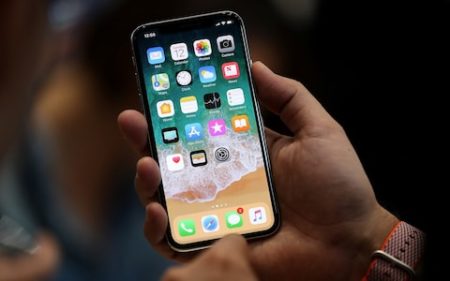
Facial recognition
All three new iPhones that will replace the iPhone 8 and 8 Plus are expected to come with facial recognition, also known as Face ID. This is not surprising, given every other major smartphone manufacturer has followed Apple into launching phones with facial recognition as a primary means of unlocking the phone.
This means the iPhones can be unlocked with just a glance. By looking at the smartphone it will open to be used by the consumer. Right now, the iPhone 8 and 8 Plus still rely on fingerprint sensors.
Last year, Face ID was considered a major step change for Apple. Now, it is expected to become a standard feature on its new set of smartphones.

Latest News
Most popular
Contact Us
Reviews



